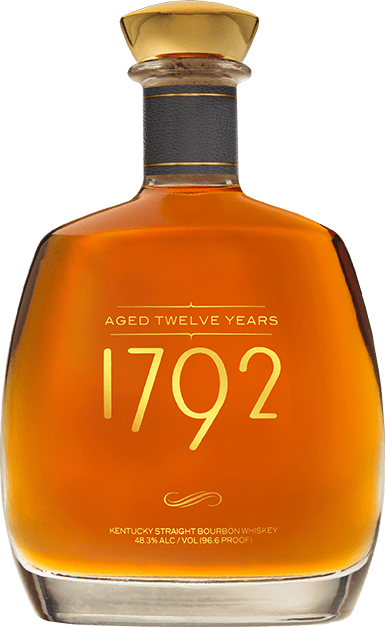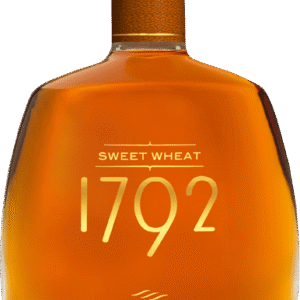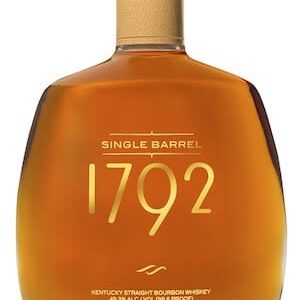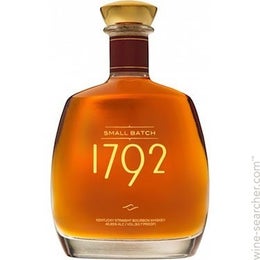1792 Aged Twelve Years
$165 Original price was: $165.$160Current price is: $160.
1792 Aged 12 Years Bourbon
Revel in the deep complexity of 1792 Aged 12 Years, a Kentucky straight bourbon matured to perfection. This exquisite spirit offers rich layers of caramel, dark cherry, and seasoned oak, with a bold, spicy finish that lingers luxuriously. Ideal for connoisseurs seeking a sophisticated, time-honored bourbon experience.
1792 Aged 12 Years Bourbon: A Guide to the Crown Jewel of the 1792 Collection
Welcome to the world of highly-aged, limited-edition bourbon. If you’ve been exploring the Barton 1792 Distillery lineup, you’ve likely discovered that their most coveted and mature expression is 1792 Aged 12 Years. This bourbon isn’t just another bottle on the shelf; it’s a statement piece, a collector’s item, and a testament to the magic that happens inside a Kentucky rickhouse over a dozen years. This comprehensive guide is designed to walk you through everything you need to know about this elusive whiskey. We’ll explore its deep, oaky flavor profile, unravel the reasons behind its rarity and high secondary market price, and help you decide if it’s a bottle worth pursuing for your own collection.
What is 1792 Aged 12 Years Bourbon?
Let’s start with the fundamentals. 1792 Aged 12 Years is a limited-release, straight bourbon whiskey and a prestigious member of the 1792 “Premium Collection” from the historic Barton 1792 Distillery in Bardstown, Kentucky. As the name clearly states, this bourbon has been aged for a full twelve years, a significant amount of time that places it at the top of the 1792 portfolio in terms of maturity.
This expression is part of an annual series of special releases, but it is often considered the pinnacle due to its age statement. In the world of bourbon, where many brands are moving away from age statements, having a prominent “12 Years Old” on the label is a bold declaration of quality and complexity. It promises a drinking experience shaped by over a decade of interaction with the charred oak barrel, resulting in a deep color and rich flavor profile that younger bourbons simply cannot replicate.
The Prestige of Age in the 1792 Family
To understand bi, it’s helpful to see it in context. The core expression, 1792 Small Batch, has no age statement but is typically around 7-8 years old. The 1792 Aged 12 Years nearly doubles that maturation period. This extended time in the barrel allows for greater concentration of flavors from the wood, including tannins, lignins, and vanillins, which transform the raw distillate into a sophisticated and nuanced spirit. It represents the distillery’s commitment to showcasing the impact of long-term aging on their high-rye mash bill.

Tasting Notes: The Flavor of 1792 Aged 12 Years
The promise of twelve years in a barrel builds high expectations. So, what does this bourbon actually taste like? The profile of 1792 Aged 12 Years is defined by its oak influence, but it’s a masterclass in balance, where the wood complements rather than overpowers the underlying spirit.
The Aroma (The “Nose”)
The first encounter is often through its complex and inviting aroma. Bringing the glass to your nose reveals a mature and rich bouquet:
-
Deep Oak and Vanilla: Immediately noticeable are scents of seasoned oak, dark caramel, and rich vanilla, all direct gifts from the long barrel aging.
-
Dark Fruit and Sweetness: Underneath the oak, you’ll find layers of dark cherry, fig, and a touch of orange marmalade.
-
Baking Spices and Leather: The high-rye mash bill still peeks through with hints of baking spices like cinnamon and nutmeg, complemented by elegant notes of leather and tobacco.
-
Overall Impression: The nose is often described as “dusty” and “classic,” evoking the scent of an old library or a seasoned cooper’s shop in the best way possible.
The Flavor (The “Palate”)
On the palate, 1792 Aged 12 Years is a full-bodied and rich experience. It’s typically bottled at 96.6 proof, which is robust enough to carry the dense flavors but approachable enough to sip comfortably.
-
Initial Richness: The sip begins with a wave of toffee, dark chocolate, and seasoned oak. The sweetness is deep and caramelized, not bright and sugary.
-
Developing Complexity: As it settles, flavors of stewed stone fruits, roasted nuts, and baking spices unfold. The rye grain provides a subtle, peppery structure that prevents the sweetness from becoming cloying.
-
Mouthfeel: The texture is often described as velvety and oily, coating the palate thoroughly and allowing the complex flavors to linger and evolve.
The Finish (The “Aftertaste”)
The finish is where the age of this bourbon truly makes its mark.
-
A long, warm, and exceptionally dry finish.
-
Notes of oak, dark chocolate, and a pleasant leathery tannin linger for a very long time.
-
It ends with a slight peppery spice and a touch of warmth, leaving a memorable and contemplative impression.
Pro Tip for Beginners: A bourbon of this age and complexity is best enjoyed neat in a Glencairn glass to appreciate its full aromatic spectrum. If you find the oak tannins a bit too drying, a single drop of distilled water can work wonders to release more fruit and sweet notes, softening the edges and opening up new layers of flavor.
The Hunt: Why is 1792 Aged 12 Years So Rare and Expensive?
The 1792 Aged 12 Years price is a topic of much discussion, and for good reason. With an MSRP (Manufacturer’s Suggested Retail Price) usually between $70 and $90, it’s a premium bottle. However, you will almost never find it for that price. On the secondary market, it frequently commands $300 to $500 or more. This dramatic markup is due to a perfect storm of factors:
-
The “Angel’s Share”: When bourbon ages for twelve years, a significant portion of the liquid evaporates through the barrel—this is romantically called the “Angel’s Share.” This means each barrel yields far fewer bottles than a younger bourbon, creating a naturally limited supply.
-
High Demand for Aged Statements: In an era of non-age-stated (NAS) bourbons, a verified 12-year age statement is a huge draw for enthusiasts seeking guaranteed maturity and depth.
-
Critical Acclaim: This expression consistently receives high scores from major whiskey publications, cementing its status as a “trophy bottle” and driving demand through the roof.
-
Collector Frenzy: Its position as the oldest and often most praised expression in the 1792 lineup makes it a must-have for completists and collectors, many of whom buy it to hold or display rather than to drink.
1792 Aged 12 Years Price and Value Analysis
So, is it worth the price?
-
At MSRP ($70-$90): An unequivocal yes. For a twelve-year-old, limited-release bourbon from a renowned distillery, this is an outstanding value that is becoming increasingly rare to find.
-
At Secondary Market Prices ($300+): This is a much more personal and difficult question. From a pure flavor perspective, few bottles are worth a 400-500% markup. Paying this much is often more about the prestige of ownership, the thrill of the hunt, and the experience of tasting a legendary bottle. There are many other fantastic, well-aged bourbons available for less money.
Ultimately, the value of 1792 Aged 12 Years bourbon at secondary prices lies in the eye of the beholder and the depth of their wallet.
How Does It Compare to Other Aged Bourbons?
To understand its place in the market, it’s helpful to compare 1792 Aged 12 Years to other well-regarded aged bourbons:
-
vs. Elijah Craig 12-Year: Elijah Craig is a more readily available 12-year-old bourbon at a lower price point. The 1792 Aged 12 Years is often considered more complex and oak-forward, with a richer mouthfeel, justifying its higher MSRP and coveted status.
-
vs. Knob Creek 12-Year: Both are premium 12-year-old offerings. Knob Creek 12-Year is typically higher in proof (100) and has a bold, nutty profile. 1792 Aged 12 Years offers a different, often more elegant and dry profile, showcasing its high-rye mash bill.
-
vs. Older Whiskies like 15+ Years: Compared to bourbons aged 15, 18, or 20 years, 1792 Aged 12 Years hits a “sweet spot.” It has developed profound oak character without venturing into the territory of being over-oaked or too tannic, a risk with extremely long aging.
For those interested in the aging process, our article on how barrel aging changes bourbon provides a deeper dive into this fascinating topic.
How to Find a Bottle of 1792 Aged 12 Years
Acquiring a bottle is the greatest challenge. Here are some realistic strategies:
-
Liquor Store Lotteries: This is the most common way for regular consumers to acquire a bottle at MSRP. Sign up for newsletters at every major retailer in your area.
-
Build Relationships: Consistently shopping at a local store and building a genuine relationship with the owner can sometimes give you access to allocated bottles.
-
Secondary Markets: Websites and groups dedicated to whiskey trading are an option, but be prepared for high prices and ensure you understand the legalities in your region.
-
Bourbon Bars: While buying a bottle may be difficult, you can often find a pour at a high-end whiskey bar. This is a highly recommended way to experience it without the commitment of a full bottle.
For the most accurate information on releases, the official Kentucky Bourbon Trail website is a great resource for news from Barton 1792 and other distilleries.
1792 Aged 12 Years Review: The Final Verdict
After considering all aspects, what is the final conclusion?
The Bottom Line: 1792 Aged 12 Years is an exceptional bourbon that delivers a masterclass in balanced, mature oak influence. It is deep, complex, and rewarding, fully justifying its position as the crown jewel of the 1792 portfolio. The hype around its quality is well-deserved.
Who is it for? The seasoned bourbon drinker who appreciates oak-driven profiles. The collector seeking to own a key piece of the 1792 puzzle. It is a contemplative sipper, best saved for a special occasion.
Who might it not be for? Beginners may find its robust oak and tannic finish a bit overwhelming. Those who prefer sweeter, fruitier, or lighter bourbons might not connect with its profile. And for anyone on a budget, the secondary market price is a significant barrier to entry.
In conclusion, 1792 Aged 12 Years is a benchmark for what a well-aged Kentucky straight bourbon can be. It’s a whiskey that commands respect and offers a deeply satisfying experience for those fortunate enough to taste it.
Frequently Asked Questions (FAQ)
1. Is 1792 Aged 12 Years being discontinued?
No, Barton 1792 Distillery has not announced the discontinuation of 1792 Aged 12 Years. It remains a part of their annual or bi-annual limited-release schedule. However, its extremely limited production quantities mean it is rarely seen, leading to rumors about its status.
2. What is the proof of 1792 Aged 12 Years?
1792 Aged 12 Years is bottled at 96.6 proof (48.3% alcohol by volume). This proof is strategically chosen to present the complex flavors with clarity and strength, while remaining approachable for a bourbon of its age.
3. How does 1792 Aged 12 Years compare to 1792 Small Batch?
The difference is night and day. The 1792 Small Batch (no age statement, ~7-8 years) is a bright, spicy, and approachable daily sipper. The 1792 Aged 12 Years is a much deeper, richer, and oak-forward bourbon. The extra aging transforms the spirit, muting the bright spice and replacing it with layers of dark fruit, chocolate, and dense oak.
4. What is a fair price for 1792 Aged 12 Years?
The only “fair” price is the official MSRP, which is between $70 and $90. Any price above that is a premium paid for rarity. While its quality is high, we always recommend seeking it at retail through lotteries or relationships before considering the secondary market.
5. Is 1792 Aged 12 Years worth the high secondary market price?
This is highly subjective. As a delicious whiskey, it is outstanding. However, as a financial value, it is difficult to justify. Paying $400 for a bottle is more about the collectibility and the experience of owning a “unicorn” bottle than it is about the liquid inside relative to other excellent bourbons available for under $100.
Be the first to review “1792 Aged Twelve Years” Cancel reply
Related products
1792 Collection







Reviews
There are no reviews yet.